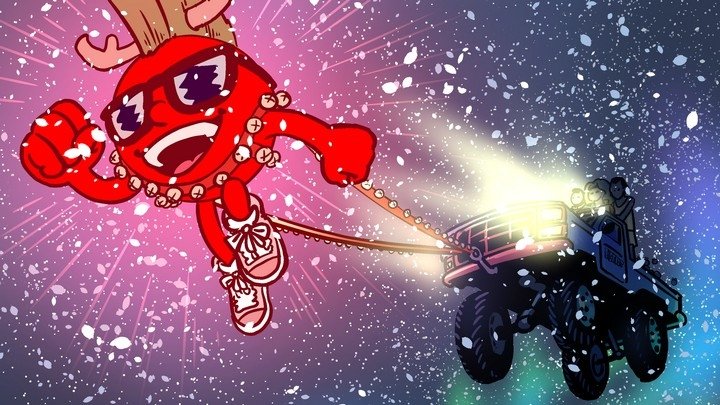Super NES Mini Countdown: #8 | Final Fantasy III
Singing operatic praises to an all-time RPG great.
Nintendo's Super NES Classic Edition mini-console arrives at the end of the month, and the Retronauts writing team has voted to rank the 20 classic games on the mini. Unlike last year's Classic NES Edition, the Super NES mini doesn't have a single dud on it, so think of this as a countdown from good to great. This time, it's the game that taught a million nerds to love opera.
Previous entries:
- 20. Super Punch-Out!!
- 19. F-Zero
- 18. Kirby's Dream Course
- 17. Donkey Kong Country
- 16. Star Fox
- 15. Super Mario RPG
- 14. Secret of Mana
- 13. Super Mario Kart
- 12. Street Fighter II Turbo: Hyper Fighting
- 11. Super Ghouls 'n' Ghosts
- 10. Kirby Super Star
- 9. EarthBound

8. Final Fantasy III
Dev.: Squaresoft
Publisher: Square
Genre: RPG
Release date: April 2, 1994 [JP] ] Oct. 20, 1994 [U.S.]
What makes Final Fantasy III a worthy inclusion?
It's every Final Fantasy in one
Depending on how you look at it, Final Fantasy III either brought the classic era of Final Fantasy (the Nintendo days) to an end, or else launched the series' cinematic future (the Sony era). Either way, it definitely feels like a culmination of everything that had come to that point: It perfects the Active-Time Battle system, combines the linear story-driven style of Final Fantasy IV with the system-driven tinkering of Final Fantasy V, and basically wraps everything you loved about 8- and 16-bit Final Fantasy into one delightful bundle. Featuring, it should be noted, some of the best graphics and sound ever seen in a video game to that point — a genuine surprise given the visual puniness of RPGs to that point.

Pack-in spoilers
FFIII divides its adventure into two phases: The World of Balance and the World of Ruin. Yeah, that's a spoiler, but if you bought the game back in the day, you saw the twist coming as soon as you opened the box: FFIII included a huge fold-out poster that contained maps of each realm. It hardly ruined the game experience, though; how the World of Balance falls into Ruin is far more surprising than the fact that it happens, and when the world finally ends — halfway through the story! — it's still likely to catch you off-guard. On top of that, the massive shift in game structure that happens as a result of the transition remains fairly unique in the genre; the game shifts from a highly linear narrative to an open-ended quest format that forces you to rethink your party makeup and tactics on the fly.
Music to your ears
Not only does FFIII have an incredible soundtrack that takes maximum advantage of the Super NES audio chip, it plays up its musical prestige with a critical show-stopping game event that revolves around opera. By and large, the opera seems like an extension of the false-ending scene in Final Fantasy V, in which your party appears to have saved the day and regroups at a formal palace ball — a quiet, non-combative scene that provides a brief break in the adventure. Here, though, the opera plays a crucial part of the action, as players have to participate in performance... while simultaneously fending off a monster's petty attempt to sabotage the show. It's surprising, majestic, and goofy all at once, and it helped establish FFIII as a game like no other before it.

Choose your own hero
One other unique feature of FFIII, at least among console RPGs: Your playable party can ultimately consist of more than a dozen members. It's possible to lose a few permanently along the way (life's rough after the end of the world) or to miss a couple altogether, and you can technically beat the game with a team of only three. But those who take the time to track down all the heroes have a huge array of warriors from which to choose. And best of all, there's no defined "main" character, only characters who spend more time as the point-of-view protagonist more than others, so you can pick a lead for the quest to suit your preferences. Is it rangy thief Locke? Stalwart former general Celes? Bereaved warrior Cyan? Or maybe you prefer the cuddly Mog. Or even Umaro… you weirdo.
Build your own hero
FFIII also allows you to build your own character to your liking. Though each party members has natural statistical tendencies — Terra is a lot better at magic than martial artist Sabin, but he has far superior physical stats to young painter Relm — you can nudge a character toward a specialty by shaping their stat bonuses at level-up with Magicite. Not only that, but Magicite allows you to give any character the ability to learn any spell, creating enormous opportunities for party customization. Of course, each character also brings a completely unique skill into combat, so those powers can play a critical part in the makeup of your team… especially in the early going. The variety available for your party's composition plays a huge part in making FFIII so endlessly replayable.

Interesting facts about Final Fantasy III
Dysculcia
Yes, Final Fantasy III is actually Final Fantasy VI. If you didn't know that at the time, you certain have heard about it since. Square skipped localizing half its Nintendo-based Final Fantasy games... but that had more to do with timing than a lack of faith in the U.S. audience, for the most part. Final Fantasy II and III — the actual 8-bit ones — were slated to come to the U.S. under their original titles, and Final Fantasy II even made it so far as receiving a first-pass at localization. But since Final Fantasy shipped in the U.S. in 1990 and Final Fantasy IV for Super NES shipped in 1991, Square decided to just jump ahead to the 16-bit era. Meanwhile, Final Fantasy V did get passed over due to its complexity… though Square had abortive plans to bring it over as Final Fantasy Extreme. The upshot is that Final Fantasy VI ended up being misnumbered on Super NES; subsequent releases, of course, have brought its numeration back in line.
99.9% pure grade
When Square brought Final Fantasy IV to the U.S. as Final Fantasy II, they radically overhauled the game to make it simpler for American audiences. Character skills, items, and key game mechanics were lost. Our Final Fantasy III, however, fared much better.
Mad marketing
Final Fantasy III surely must have been the first U.S.-released role-playing game to get a television ad. It's a strange one, inexplicably presenting latecomer party member Mog as a commercial casting director torching various in-game monsters; the U.S. box art is in fact a reference to the commercial. I saw this late one night on MTV and nearly thought I was hallucinating… but I did run out and buy the game at my first opportunity, so that's a pretty good hallucination.
Broken traditions
That is, FFIII upholds the tradition of older Final Fantasy games being terribly broken. In the spirit of the original Final Fantasy having entire spells that simply didn't function at all, FFIII has one character statistic — Evade — that doesn't work in battle. While that hinders your party (as weak-yet-evasive characters simply become weak), it can also help if you know how to exploit it. One of the more famous examples is the Vanish/X-Zone bug, wherein turning a bad guy invisible will render it 100% vulnerable to spells… including instant-kill spells that should have a 0% chance of success. It's entirely possible to cheese high-level enemies with a one-two casting of specific spells and rake in the rewards. (It's also possible, by using Relm's Sketch ability on an invisible foe, to glitch the game so hard your party receives a full inventory of top-tier items… or, alternately, to delete every save file on the cartridge.)
Broken joy
As in, the game is so broken it's a joy to play. Final Fantasy III is a systems-obsessed RPG fan's delight. While less nuanced and balanced than Final Fantasy V's extraordinary Jobs system, FFIII's Magicite system lends itself to abuse and exploitation. You don't even have to abuse things like the Vanish/X-Zone or Sketch bugs — just knowing how to use skills and stats in clever combinations does the trick. You can, in fact, cheese the game so hard that a single character can wipe out the final boss before he can follow up his preemptive opening attack. And it's glorious.

Aerith Lives: The prequel
Midway through the adventure, the noble-hearted imperial general Leo dies in combat. His death follows immediately on the heels of an extremely brief segment in which you can actually control Leo while your actual party recovers from a devastating attack, and in these moments Leo not only has unique battle sprites but also a custom battle skill, Shock. This combination of factors led many fans to speculate that Leo was intended to be a full party member — not an impossible idea, given that several other doomed characters can be kept alive by making the correct choices. He wasn't, but that hasn't stopped enterprising players from figuring out ways to hack and glitch him into the game. People get really obsessed about Final Fantasy III.
Music to your ears, pt. 2
We'll be recording a deep-dive podcast examination of Final Fantasy VI very soon, so you can definitely look forward to that. We might even ask Chris to sing the opera parts.
Image sources: VG Museum and HG101




